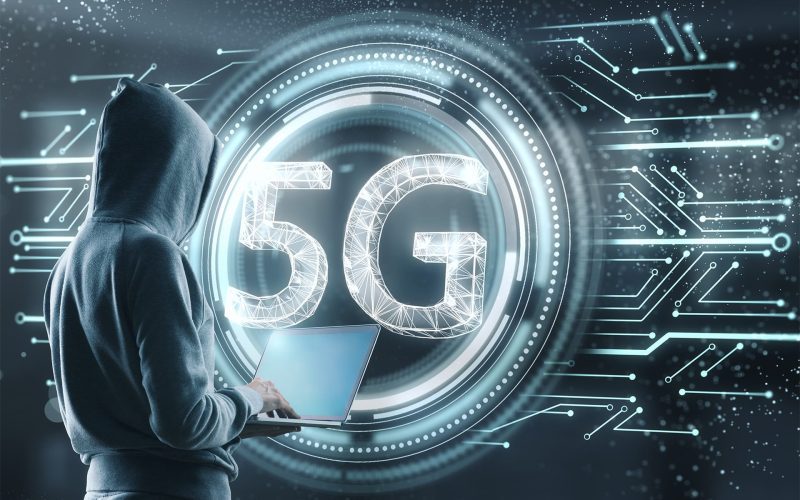Introduction
5G technology is revolutionizing the way we connect, communicate, and interact with the world. With faster speeds, lower latency, and greater capacity, 5G is set to transform industries, enhance daily life, and pave the way for innovations like smart cities and autonomous vehicles. In this article, we’ll explore 10 key ways 5G technology is shaping the future and what it means for you.
What is 5G Technology?
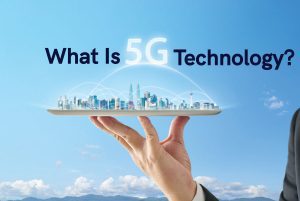
5G is the fifth generation of mobile network technology, which is designed to provide faster speeds, lower latency (or delay), and better overall connectivity than previous generations like 4G. This new technology promises to change the way we use our devices and connect to the internet. Unlike earlier generations, 5G uses higher-frequency radio waves, enabling it to handle more data and support more devices at once.
How Does 5G Work?
5G works by using radio waves to transmit data between devices, but it has several key differences from 4G. These differences include faster speeds (up to 100 times faster than 4G), better efficiency, and the ability to support more devices at the same time. 5G uses smaller antennas and requires fewer resources to transmit data, making it a more efficient system overall.
What Makes 5G Different from 4G and 3G?
The most significant advantage of 5G over previous generations is its speed. While 4G offered maximum speeds of around 1 Gbps, 5G can reach speeds up to 10 Gbps or more, making it ideal for data-heavy applications like virtual reality (VR) and 4K video streaming. Another key difference is 5G’s low latency. With 5G, the time it takes for data to travel from one point to another is drastically reduced, making tasks like downloading files or video conferencing much faster and smoother.
5G Technology Benefits for the Future
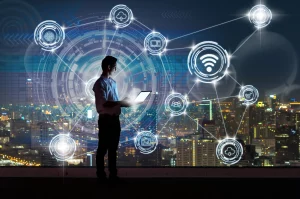
1. Faster Internet Speeds
5G offers download speeds up to 100 times faster than 4G, enabling seamless streaming and browsing.
Tip: Expect near-instant downloads of large files and high-quality video streaming.
Example: A full HD movie can be downloaded in seconds with 5G.
2. Lower Latency
5G reduces latency to as low as 1 millisecond, improving real-time applications like gaming and video calls.
Tip: Gamers will experience smoother gameplay with minimal lag.
Example: Remote surgeries and autonomous vehicles rely on low latency for precision.
3. Enhanced Connectivity
5G supports more devices per square kilometer, making it ideal for crowded areas and IoT devices.
Tip: Smart homes and cities will benefit from seamless connectivity.
Example: A single 5G network can connect thousands of devices simultaneously.
4. Smart Cities
5G enables smart city technologies like traffic management, energy efficiency, and public safety.
Tip: Sensors and cameras can communicate in real time to optimize city operations.
Example: Barcelona’s smart city initiatives have reduced energy consumption by 30%.
5. Autonomous Vehicles
5G’s low latency and high reliability are crucial for self-driving cars.
Tip: Vehicles can communicate with each other and infrastructure to prevent accidents.
Example: Companies like Tesla and Waymo are testing autonomous vehicles on 5G networks.
6. Healthcare Innovations
5G enables telemedicine, remote monitoring, and real-time data sharing for better patient care.
Tip: Doctors can perform remote surgeries using robotic tools.
Example: The COVID-19 pandemic accelerated the adoption of telemedicine powered by 5G.
7. Augmented and Virtual Reality
5G enhances AR and VR experiences with faster speeds and lower latency.
Tip: Expect immersive gaming, virtual meetings, and interactive learning.
Example: AR apps can overlay real-time information on your surroundings.
8. Industrial Automation
5G enables smart factories with real-time monitoring and automation.
Tip: Manufacturers can reduce downtime and improve efficiency.
Example: Siemens uses 5G to connect machines and optimize production.
9. Environmental Impact
5G can reduce energy consumption and support sustainable practices.
Tip: Smart grids and energy-efficient devices rely on 5G connectivity.
Example: 5G-powered sensors can monitor air quality a
What Does the Growth of 5G Mean for Consumers?
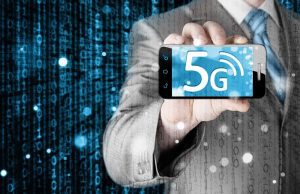
As more devices become 5G-compatible, consumers can expect faster download and upload speeds, less lag, and better connectivity in crowded places like stadiums or concerts. With 5G, even rural areas could see improvements in internet access, as it can be deployed through wireless networks instead of relying on cables. For businesses, 5G offers the chance to innovate with new products, services, and applications that were not possible before.
The Impact on Internet Connectivity
5G’s ability to offer high-speed internet connections over the air could bring reliable internet to places that currently don’t have access. This could be a game-changer for rural communities, remote work, and education. Providing better internet at a lower cost could help lift millions out of poverty by giving them access to online education, remote jobs, and digital services.
How 5G Will Improve Our Daily Lives
5G will make many everyday activities easier and faster. For example, streaming movies or playing online games will be smoother with 5G because the internet will work faster with less delay. It will also improve the experience of using virtual reality (VR) or augmented reality (AR) on phones and other devices. With 5G, everything from work to entertainment will be more enjoyable and efficient.
5G and Smart Homes
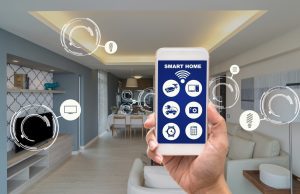
5G will make smart homes even better. More devices in our homes, like thermostats, lights, and security cameras, will be able to work together in real-time. With 5G, these devices can communicate faster and more reliably, which means homes can become smarter and more energy-efficient. It will also make controlling these devices easier through voice assistants or apps.
5G’s Impact on Education
Education will also benefit from 5G. With faster internet speeds, students can access online learning materials, videos, and virtual classes without lag or delays. Teachers can even host live video lessons, helping students learn from anywhere in the world. This technology will make education more flexible and accessible for people of all ages.
5G and Healthcare

5G can also improve healthcare. With faster internet, doctors can use real-time video calls to talk to patients, no matter where they are. This means people in remote areas can get healthcare advice without traveling far. 5G can also help doctors use advanced tools like robotic surgery, which can be more precise and faster, improving patient care.
5G in Transportation
5G will make transportation smarter and safer. Cars and buses will be able to communicate with each other and with traffic signals. This can help prevent accidents by alerting drivers about road hazards or traffic changes. It will also make self-driving cars safer and more reliable by giving them better access to real-time information.
5G and the Entertainment Industry

5G will make entertainment more exciting. Streaming services will be able to deliver higher-quality videos without buffering. It will also improve live streaming events, allowing people to watch concerts, sports, or shows in real-time with no delays. Additionally, 5G will make gaming more immersive with faster, smoother online play and more detailed graphics.
The Role of 5G in Business Growth
For businesses, 5G will help them work faster and more effectively. It will allow companies to connect their devices and systems in real-time. This means businesses can make quicker decisions, improve customer service, and reduce costs. 5G will also allow companies to develop new products and services, opening up more opportunities for growth.
The Environmental Impact of 5G
5G could also help protect the environment. With faster and more reliable technology, companies can reduce waste and save energy. For example, smart grids can use 5G to monitor and manage energy use, helping to reduce energy consumption. Additionally, 5G-enabled sensors can help businesses track pollution levels, improving efforts to protect the environment.
How 5G Will Evolve Over Time

As 5G continues to grow, it will become even more advanced. In the future, we may see faster speeds, stronger connections, and more devices connected to the network. 5G will also help support other new technologies like the Internet of Things (IoT), where everyday objects can communicate with each other. Over time, these improvements will make our world even more connected and efficient.
5G and Privacy Concerns
While 5G brings many benefits, it also raises concerns about privacy. As more devices become connected, it becomes easier for hackers to access personal information. It’s important to make sure that data is protected with strong security measures. Governments and companies will need to work together to create rules that keep people’s private information safe while still allowing 5G to work.
Challenges and Concerns
Despite all the benefits, there are still challenges to overcome. One of the biggest hurdles is the cost of building the necessary infrastructure. In many areas, especially rural regions, setting up 5G networks could take years and billions of dollars. Additionally, there are concerns about data privacy and security, as more devices connect to the internet. Governments and companies will need to address these challenges as they roll out 5G networks worldwide.
Despite its benefits, 5G faces challenges like infrastructure costs and security concerns.
Tip: Governments and companies must address these issues to ensure widespread adoption.
Example: Cybersecurity measures are essential to protect 5G networks.
The Future of 5G: What to Expect
Over the next few years, we can expect the global number of 5G networks and devices to grow significantly. By 2027, it’s expected that more than 80% of smartphones will support 5G. With this widespread adoption, more industries will begin to explore the full potential of 5G, from virtual reality to autonomous cars.
Comparative Table: 5G vs. 4G
| Feature | 4G | 5G |
|---|---|---|
| Speed | Up to 1 Gbps | Up to 20 Gbps |
| Latency | 30-50 milliseconds | As low as 1 millisecond |
| Bandwidth | Limited bandwidth | Wider bandwidth with support for more devices |
| Network Coverage | Wide but limited in rural areas | Expanding, especially in urban areas |
| IoT Device Support | Limited capacity | High capacity, supports millions of devices |
| Use Cases | Basic mobile apps, HD video streaming | Autonomous vehicles, remote surgery, smart cities |
Analysis Table: Key Advantages of 5G
| Area | Advantage of 5G |
|---|---|
| Healthcare | Faster data transfer for remote surgeries and real-time patient monitoring |
| Supply Chains | Increased efficiency through automation, IoT integration, and real-time monitoring |
| Smart Cities | Enhanced traffic management, energy optimization, and public safety |
| Edge Computing & AI | Faster data processing and real-time decision making for AI applications |
| Fixed Wireless Networks | Cost-effective internet access for underserved areas |
Conclusion
5G technology is more than just faster internet it’s a catalyst for innovation and transformation across industries. From smart cities and autonomous vehicles to healthcare and entertainment, 5G is shaping the future in ways we’re only beginning to understand. As we embrace this new era of connectivity, it’s essential to address challenges and ensure equitable access for all. What excites you most about 5G technology? Share your thoughts in the comments below!






